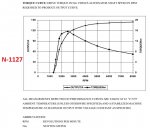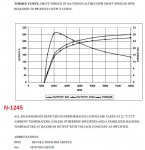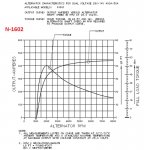Wire Fox
Well-known member
- 1,252
- 161
- 63
- Location
- Indianapolis, Indiana
Hey all, I know my A1 is going to be coming in with a weaker 60 Amp unit and it looks like it's missing parts, so I'm shopping alternators at the moment just in case it's truly DOA. I know that the 200 Amp dual voltage alt is the defacto go-to on these boards. It looks likes it's relatively compact, the installation kits are cheap, and there's not much to complain about except for the price when compared to an outdated 60 Amp. I also took notice that the 400 Amp is officially listed as the replacement for the 200 Amp units and in-service on the ECVs. It's hella-heavy at 120 pounds, appears to be larger, and the install kit for it is $200 more than a comparable 200 Amp kit.
I was a few pages in on a search for information about the 400A units and the only real commentary I picked up on was "you don't want the 400A one, you want the 200A." I guess I just want to know why. Are there any unforeseen drawbacks here, or have am I possibly not realizing how much larger/heavier the 400 Amp unit is over the 200 Amp? I'm worried about any possible reliability issues, maintenance troubles, engine wear, fuel consumption, or wiring issues (I'm assuming the cables in the install kits are all that's necessary-haven't done my homework to be sure) it might bring on? With the NOS Fleabay price being almost the same for the 200A and 400A alternators right now, it's really tempting to pay the extra $200 on the install kit to have literally double the power in order to be ready for any radio or shelter setup I could ever dream of.
Thanks everyone. Look forward to seeing what experience can be brought to the table on this.
I was a few pages in on a search for information about the 400A units and the only real commentary I picked up on was "you don't want the 400A one, you want the 200A." I guess I just want to know why. Are there any unforeseen drawbacks here, or have am I possibly not realizing how much larger/heavier the 400 Amp unit is over the 200 Amp? I'm worried about any possible reliability issues, maintenance troubles, engine wear, fuel consumption, or wiring issues (I'm assuming the cables in the install kits are all that's necessary-haven't done my homework to be sure) it might bring on? With the NOS Fleabay price being almost the same for the 200A and 400A alternators right now, it's really tempting to pay the extra $200 on the install kit to have literally double the power in order to be ready for any radio or shelter setup I could ever dream of.
Thanks everyone. Look forward to seeing what experience can be brought to the table on this.





